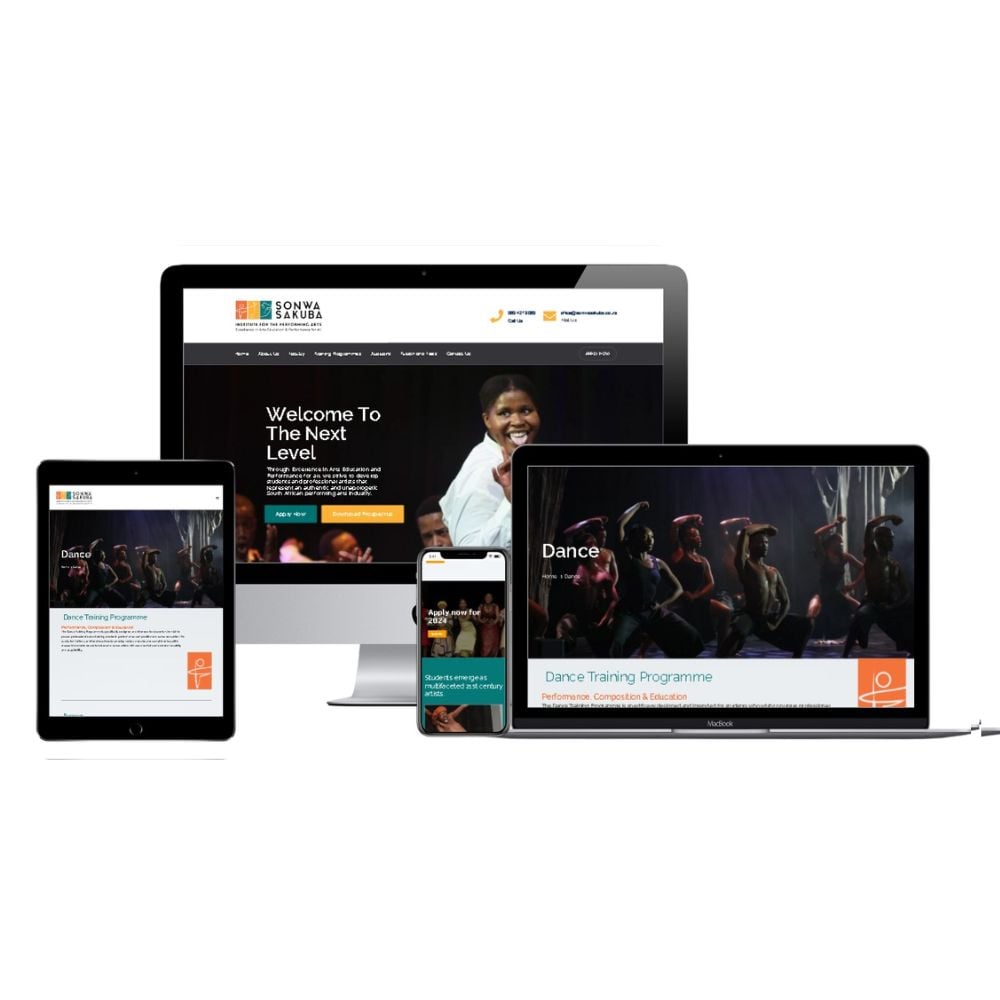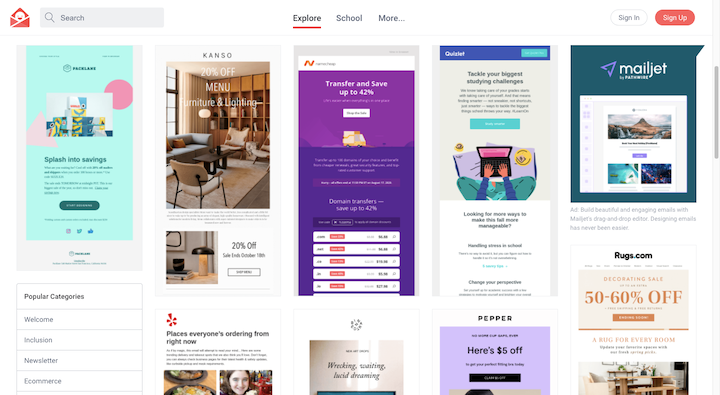The Ultimate Guide to Modern Site Layout Trends
In the ever-evolving digital landscape, modern site design trends play an essential function in forming customer experience and involvement. From the surge of minimal style concepts that prioritize simplicity to the influence of bold typography in specifying brand identity, each aspect adds to a cohesive on the internet presence. The focus on mobile-first and receptive methods, together with innovative microinteractions, better enhances use. In addition, the growing concentrate on lasting web design practices shows a commitment to environmental duty. These trends jointly raise vital inquiries concerning the future of effective internet style and what it implies for consumers and services alike.
Minimalist Design Principles
Minimalist design concepts highlight the idea that less is a lot more, supporting for simpleness and functionality in visual communication. This approach remove unnecessary components, focusing rather on important components that convey the desired message properly. By focusing on quality, minimal layout enhances individual experience, permitting site visitors to browse internet sites easily.
Core tenets of minimal design include using sufficient white space, which produces a sense of balance and company. This negative space not just directs the audience's interest to crucial elements but additionally promotes a relaxing aesthetic environment. Furthermore, a minimal shade combination is commonly utilized, utilizing soft tones or monochromatic schemes to maintain aesthetic cohesion and prevent overwhelming the user.
Typography plays a crucial function in minimalist design, where legible font styles are chosen for their simpleness and performance in connecting material. Inevitably, minimal layout principles grow a concentrated atmosphere that urges customers to involve with the material, boosting the total performance of modern-day site style.
Vibrant Typography Choices
Accepting strong typography selections has actually come to be a specifying attribute of contemporary web site layout, as it efficiently records focus and shares strong messaging. Developers are progressively making use of typography not just as a useful aspect however as an essential aesthetic element that boosts the total visual and individual experience.

Moreover, the association of bold typography with minimal layout principles permits for striking contrasts, improving readability while preserving aesthetic allure. Making use of whitespace around vibrant text even more highlights its relevance, making sure that the message resonates with the target market.
As electronic landscapes come to be much more competitive, leveraging vibrant typography allows brand names to differentiate themselves and leave a long-term perception. The mindful choice of fonts and their application can stimulate emotions, establish tone, and drive action, making bold typography an important tool in modern-day website layout. Inevitably, it is a powerful method to improve storytelling and make certain that essential messages are not only seen but additionally really felt.
Receptive and Mobile-first Design
Receptive and mobile-first style has arised as a crucial principle in modern web site growth, reflecting the enhancing dependence on mobile devices for accessing on the internet material. As user behavior changes in the direction of mobile surfing, designers must prioritize developing experiences that adjust seamlessly across various display dimensions and resolutions.
A responsive style makes sure that a web site instantly readjusts its layout, photos, and capability based on the tool being made use site link of. This approach improves individual experience by offering regular navigation and readability, regardless of whether the visitor is on a smartphone, tablet, or desktop computer. Mobile-first layout supporters for creating web sites initially for smaller screens, subsequently scaling up to bigger display screens. This technique encourages a much more effective and structured design process, concentrating on necessary web content and performance first.
Applying mobile-first and receptive principles not only satisfies individual choices but additionally aligns with seo (SEO) techniques. Significant search engines, like Google, prioritize mobile-friendly internet sites in their positions, making it imperative for businesses to take on these layout strategies. In an affordable electronic landscape, welcoming receptive and mobile-first style is not simply a choice; it is crucial for making sure access and engagement with a varied audience.
Involving Microinteractions
Microinteractions play a pivotal duty in improving customer engagement and overall website experience, especially in the context of responsive and mobile-first design. These refined style elements provide instant responses to users, making communications more user-friendly and delightful. Examples consist of button computer animations, notification alerts, and loading indications, which not just guide customers however likewise produce a feeling of connection with the interface.
Integrating engaging microinteractions can significantly improve use by reducing cognitive load. When customers get acoustic or aesthetic comments upon performing actions, such as clicking a button or submitting a form, they feel extra positive in their selections. This promotes a smoother navigation experience, ultimately raising user retention.

As internet site style patterns remain to develop, the relevance of microinteractions can not be overemphasized. They offer as the refined yet effective touchpoints that change regular communications right into extraordinary experiences, consequently elevating the overall performance of contemporary website design.
Sustainable Web Style Practices
Sustainable internet layout techniques are becoming increasingly vital as the digital landscape expands and environmental issues increase. Designers and designers are recognizing their obligation to produce internet sites that click now not only offer customer demands however also reduce environmental impact. This technique includes numerous crucial strategies.
To start with, optimizing power usage is paramount. Sites ought to be created to fill swiftly and successfully, which minimizes web server energy usage and enhances individual experience. Strategies such as picture compression, reducing HTTP demands, and utilizing modern coding methods contribute significantly to this objective.
Second of all, choosing green hosting providers is important - website design. Many holding business informative post are currently powered by eco-friendly energy sources, allowing web sites to run in an extra lasting fashion. This option reflects a commitment to decreasing carbon footprints
Furthermore, adopting a minimalist design can enhance sustainability. Less elements on a page lead to less information transfer, which not only accelerates filling times yet additionally saves sources.
Finally, promoting electronic availability ensures that sites reach a wider audience without unnecessary bloat, straightening customer experience with ecological obligation. By integrating these sustainable practices, web designers can add favorably to both individual involvement and the planet's health.
Conclusion
In recap, contemporary web site style patterns emphasize the integration of minimal principles, strong typography, and responsive layout to improve user experience. Engaging microinteractions add to remarkable communications, while lasting methods advocate for environmentally aware development. Jointly, these elements not just elevate aesthetic appeal but additionally enhance functionality, making sure that websites are both user-friendly and aesthetically striking. Taking on these trends is necessary for producing impactful electronic experiences that resonate with individuals in a significantly competitive online landscape.
In the ever-evolving digital landscape, modern web site design fads play a crucial duty in shaping user experience and interaction. By focusing on clarity, minimal design improves customer experience, permitting site visitors to navigate internet sites effortlessly.
Ultimately, minimalist style principles grow a focused environment that motivates users to engage with the web content, enhancing the overall efficiency of modern site design.Microinteractions play an essential function in boosting customer engagement and overall website experience, specifically in the context of receptive and mobile-first layout.In recap, modern site design trends highlight the integration of minimal principles, bold typography, and receptive design to improve user experience.